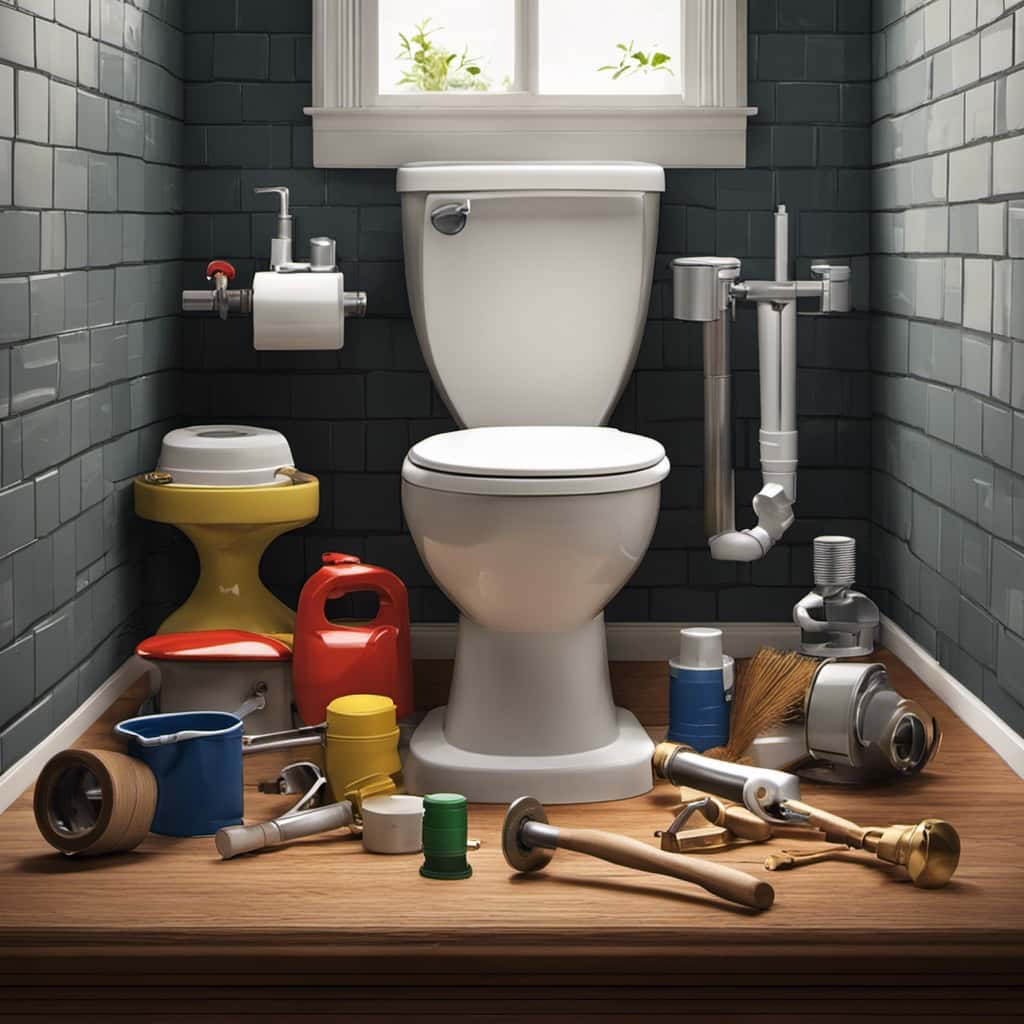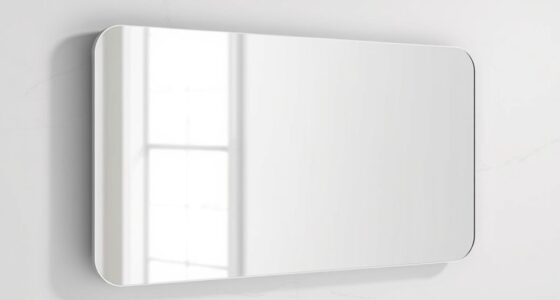Are you tired of your toilet refusing to flush? Frustrated by the clogs and blockages that seem to always occur at the most inconvenient times? Fear not, for we have the solution!
In this article, we will explore a variety of techniques to empower you with the knowledge of what to put in your toilet to make it flush effortlessly. From vinegar and baking soda to enzyme-based drain cleaners, we’ve got you covered.
Get ready to master the art of toilet flushing!
Key Takeaways
- Vinegar and baking soda, as well as hot water and dish soap, are effective methods for unclogging toilets.
- These methods create a chemical reaction that helps break down blockages.
- Plungers are simple and effective tools for clearing toilet clogs, using suction to remove the blockage.
- Toilet augers are essential tools for stubborn blockages, designed specifically for toilets and capable of navigating through curves and bends.
Vinegar and Baking Soda
Using vinegar and baking soda is an effective method for unclogging toilets. When combined, these two household ingredients create a powerful chemical reaction that can break down stubborn clogs.

To use vinegar and baking soda to clean toilets, start by pouring half a cup of baking soda into the toilet bowl. Let it sit for a few minutes to allow the baking soda to work its magic.
Then, pour a cup of vinegar into the bowl, making sure to pour it slowly and evenly. The vinegar will react with the baking soda, creating a fizzing action that helps to dislodge the clog.
Allow the mixture to sit for about 30 minutes before flushing the toilet. This method is a great alternative to using a plunger and can be done using common household items.
Hot Water and Dish Soap
To make your toilet flush more effectively, we can try using hot water and dish soap. This simple DIY remedy can help remove stubborn blockages and improve the overall performance of your toilet. Here’s how to do it:

- Fill a bucket with hot water. Make sure it’s not boiling, as this can damage the toilet bowl.
- Add a few squirts of dish soap to the hot water. The soap will help break down any grease or grime in the pipes.
- Carefully pour the mixture into the toilet bowl. Aim for the center of the bowl to ensure even distribution.
Let the hot water and dish soap solution sit in the bowl for about 10 minutes. Then, flush the toilet to see if the clog has been cleared. If not, you may need to try other DIY remedies or consider using a specialized toilet bowl cleaner.
Plunger
After attempting to unclog your toilet with hot water and dish soap, the next step is to try using a plunger. A plunger is a simple yet effective tool for clearing toilet clogs and maintaining proper toilet function.
To use a plunger, start by placing the rubber cup over the drain hole at the bottom of the toilet bowl. Push down firmly and pull up quickly, creating suction to dislodge the clog. Repeat this plunging motion several times until the water starts to drain. Remember to maintain a tight seal between the plunger and the drain hole to maximize suction.
If the plunger doesn’t resolve the clog, it may be time to consider using a toilet auger for more stubborn blockages.
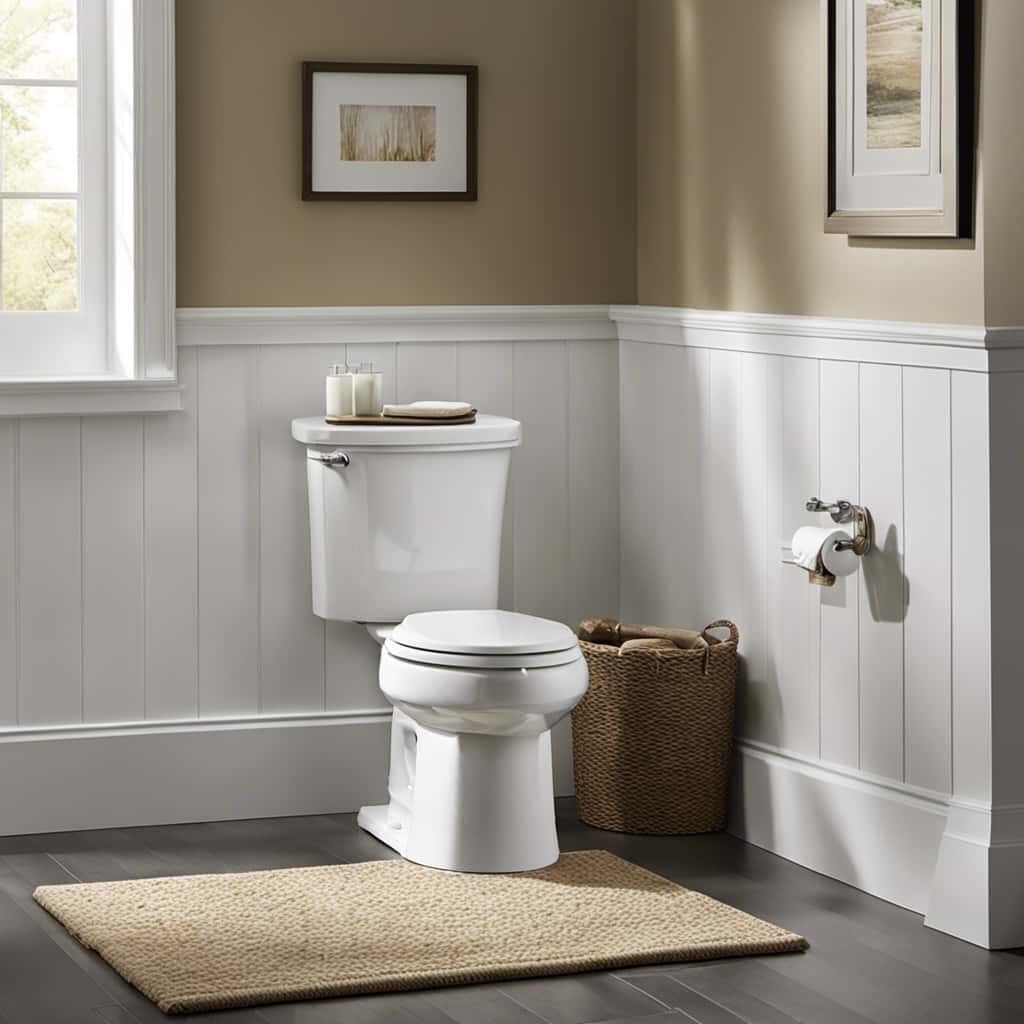
Toilet Auger
With a toilet auger, we can effectively clear stubborn blockages in our toilets. Here are three reasons why a toilet auger is an essential tool for unclogging toilets:
- Versatility: A toilet auger, also known as a closet auger, is specifically designed to tackle toilet clogs. Its flexible cable can navigate through the curves and bends of the trap and reach the source of the blockage with precision.
- Powerful clearing action: The auger’s rotating cable is capable of breaking up and dislodging stubborn clogs, such as toilet paper or foreign objects, that a plunger may struggle to remove.
- Non-damaging: Unlike some other unclogging methods, a toilet auger is unlikely to cause damage to the porcelain bowl or the plumbing system. Its gentle yet effective action ensures that the blockage is cleared without causing any harm.
Enzyme-based Drain Cleaners
Now let’s delve into the benefits of using enzyme-based drain cleaners to further address toilet clogs.
Enzyme-based drain cleaners offer several advantages for regular toilet maintenance. Firstly, these cleaners are highly effective at breaking down organic matter, such as toilet paper, hair, and soap scum, which can cause clogs in the toilet drain. By using enzymes, these cleaners can dissolve these substances, preventing blockages and ensuring smooth flushing.
Additionally, enzyme-based drain cleaners are environmentally friendly as they don’t contain harsh chemicals that may harm the plumbing system or pollute the water supply.
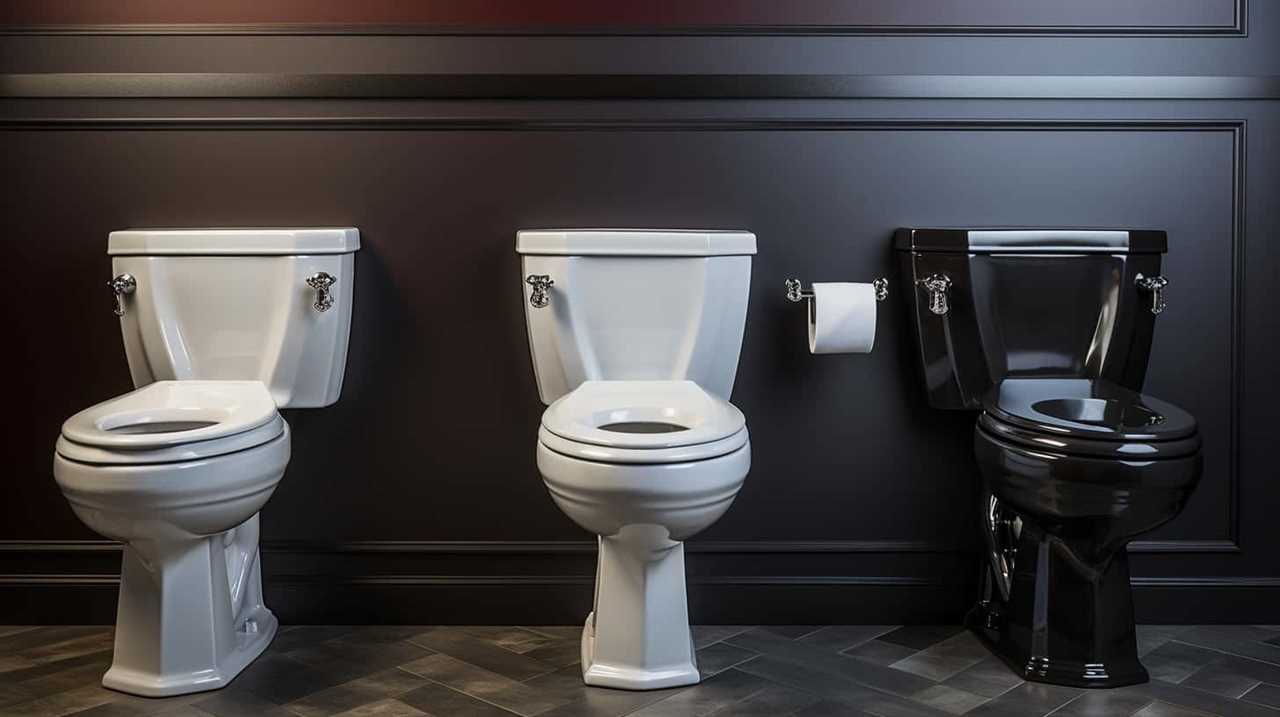
When choosing the right enzyme-based drain cleaner for your toilet, it’s important to consider its compatibility with your plumbing system, the severity of the clog, and any specific requirements or restrictions mentioned by the manufacturer. Taking these factors into account will help you select the most suitable cleaner for optimal toilet maintenance.
Frequently Asked Questions
How Often Should I Use Vinegar and Baking Soda to Unclog My Toilet?
We use vinegar and baking soda to unclog our toilet occasionally. However, there are alternative methods you can try, such as using a plunger or a toilet auger, depending on the severity of the clog.
Is It Safe to Use Hot Water and Dish Soap in a Toilet With a Septic System?
Using hot water and dish soap in a toilet with a septic system is not recommended. Instead, consider eco-friendly toilet cleaning alternatives like vinegar and baking soda, which can help unclog and maintain your toilet without harming the septic system.
Can a Plunger Be Used to Unclog a Toilet if the Water Is Not Draining at All?
Yes, a plunger can be used to unclog a toilet when the water is not draining. However, it is important to note that plungers are not designed for use on bathtubs. Also, vinegar and baking soda are safe to use on a kitchen sink.
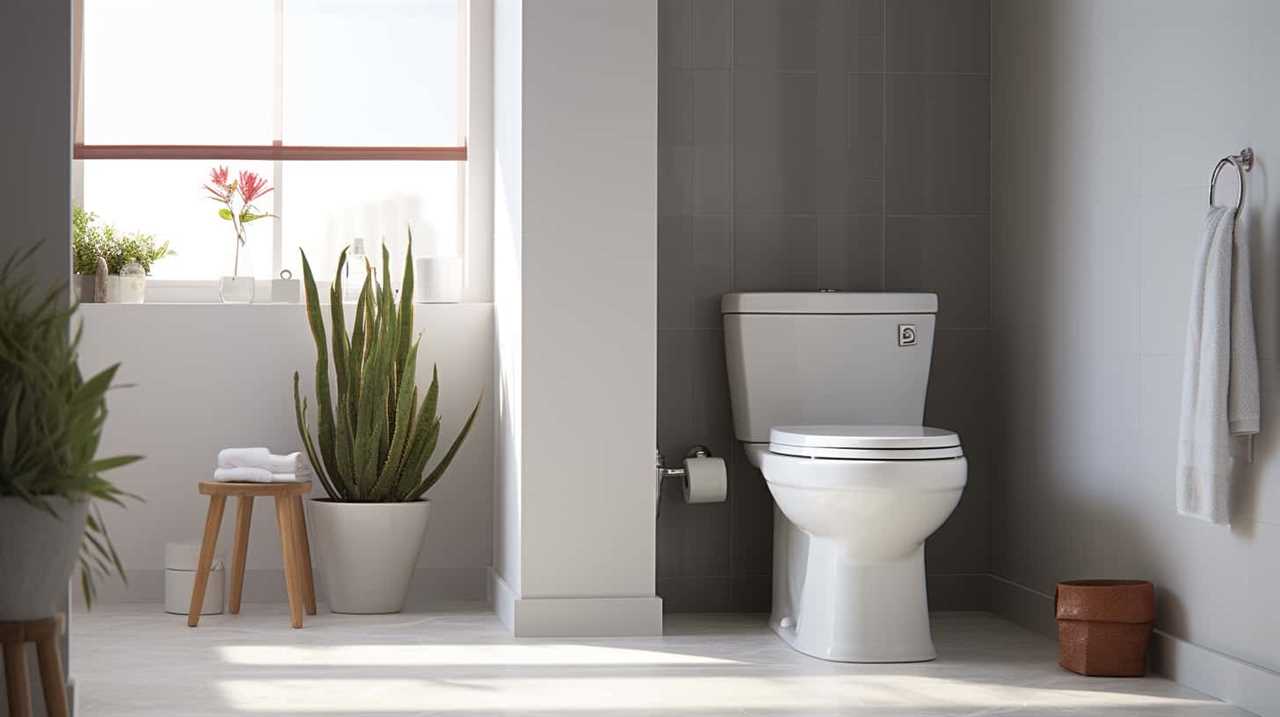
Are Toilet Augers Effective in Unclogging Toilets With Stubborn Blockages?
Toilet augers are effective for unclogging stubborn blockages. However, if you’re looking for alternatives or want to unclog without chemicals, there are other methods to consider.
What Precautions Should Be Taken When Using Enzyme-Based Drain Cleaners in a Toilet?
When using enzyme-based drain cleaners for toilet maintenance, it’s important to take precautions. Ensure the product is specifically designed for toilets, follow the instructions carefully, and avoid mixing it with other chemicals to prevent damage or harmful reactions.
Conclusion
So, there you have it – a few options to get your toilet flushing smoothly again.
Who knew that a simple combination of vinegar and baking soda, or some hot water and dish soap, could work wonders?
And let’s not forget the trusty plunger and toilet auger, always there to save the day.
But hey, if you’re feeling adventurous, why not try an enzyme-based drain cleaner?
Just remember, a clogged toilet is no laughing matter, but with these handy solutions, you’ll be flushing with ease in no time.

